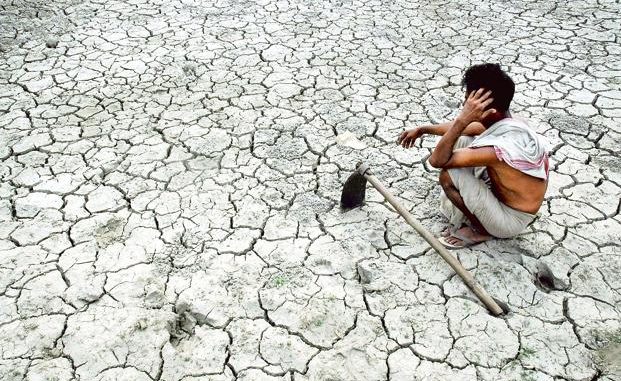
By Kadayam Subramanian
The fatal shooting by police of five farmers during a protest June 6 in the Madhya Pradesh city of Mandsaur was a tragic result of the severe economic tension that persists in rural India. More than 300,000 farmers are said to have killed themselves during the last 20 years with Maharashtra leading the states with the worst rate of suicide.
Journalist Palagummi Sainath, founder of People’s Archive on Rural India (Pari), has documented the problems on his website: (www.ruralindiaonline.org). No comparable effort has been made to highlight the problems of the rural poor in India. Sainath’s book, Everybody Loves a Good Drought, has become a classic.
Agrarian struggles have played a huge role in Indian politics before and after independence. There has always been a divide between elite politics and peasant struggles in India. The Naxalite movement, which emerged in the late 1960s, called for armed struggles to address the needs of the agrarian poor. The movement, shaped by Maoist ideology, is still active in Indian politics.
Reforms essential to avert social upheaval
The home ministry in the 1960s took note of the movement and warned that the so-called Green Revolution would turn into a Red revolution if far-reaching agrarian reforms were not carried out. The report remained on paper with predictable consequences.
In Madhya Pradesh, which had a bumper harvest in 2016, more than 1,900 farmers killed themselves between February of last year and this year, according to the National Crime Records Bureau (www.ncrb.org)
Falling prices due to a production glut, a cash crunch resulting from the 2016 demonetization and the predominance of difficult-to-maintain small holdings, have worsened agrarian unrest.
Like their counterparts in Maharashtra, the farmers of Madhya Pradesh at Mandsaur were demanding profitable prices. Besides the cash crunch resulting from demonetization, the crisis of agricultural credit has worsened the plight of farmers. Sale prices did not match rising costs. Farmers were forced to go on strike and even contemplate giving up market production for subsistence farming.
Two clear demands from the farmers
Two persistent demands call for a loan waiver and a minimum support price with a 50% margin above input costs. Earlier this year, Prime Minister Narendra Modi promised loan waivers for farmers during his election campaign for the Uttar Pradesh state assembly. This boosted demand for loan waivers in other states.
In Maharashtra, the unrest began in the last week of May and resulted in the choking of supplies to major markets. In Madhya Pradesh, the unrest led to the police shooting at Mandsaur.
Though all peasant organizations agree on the demands, Madhya Pradesh Chief Minister Shivraj Singh Chauhan worked out a separate deal with the state peasant organization affiliated with his political party, which left out inconvenient demands. The farmers became enraged, leading to the June 6 police shooting in Mandsaur.
The structural crisis of Indian agriculture and its social ramifications including farmer suicides, have never received attention from successive governments.
The structural crisis of Indian agriculture and its social ramifications including farmer suicides have never received attention from successive governments.
In his research, Palagummi Sainath notes that 15 million farmers have been forced out of agriculture. He further noted the issue of “predatory commercialization” of Indian agriculture masterminded by the state in collusion with the corporate sector. The earlier, more benevolent role of the state, which provided cheaper inputs to farmers, has vanished.
Operation Barga, a land-reform movement in West Bengal led by the Communist Party of India (Marxist) in the 1980s was a notable attempt to deal with the agrarian crisis but was not followed up.
Modi’s Bharatiya Janata Party, which governs Uttar Pradesh, Maharashtra, and Madhya Pradesh, has responded with smugness to the agrarian crisis.
The farmers’ agitation, however, relates to more than loan waivers and minimum support price. Underlying the agitation is a demand for fundamental reform of Indian agriculture.
The National Commission on Farmers led by the agricultural scientist Professor M.S. Swaminathan, set up by the previous Manmohan Singh government, produced five reports. The main recommendations of the 2006 Swaminathan Commission — land reforms, irrigation reforms, credit expansion and restructuring and remunerative support price ensuring 50% margin over the cost of production — remain key elements of the peasant movement.
Parliament needs to discuss farmer suicides
Sainath, however, has called for a 10-day special session of the Indian Parliament to discuss the Swaminathan Commission report with one day fully devoted to a discussion of farmer suicides.
He wants a white paper to be tabled in Parliament providing not just figures of agricultural growth but dealing with the state of the farmers. It must show where Indian agriculture should go.
However, Professor Ramesh Chand of the Narendra Modi-established National Institute for Transforming Indian blames the farmers for their alleged “unreasonable expectations” as well as politicians who allegedly “spoil” the peasantry with “populism.” He calls for liberalization of the agricultural economy, the introduction of extensive contract-farming laws and moving peasants out of agriculture. In other words, he wants the agriculture sector to be handed over to corporate control.
To carry out this agenda, the BJP-led establishment has unleashed its two-pronged strategy of violent suppression of peasant protests and increasing communal polarization.
But peasant protests clearly demonstrate the potential of united resistance. And the Maharashtra government’s belated announcement of a complete loan waiver program shows the strength of the peasant movement.
Sainath has noted a “determination among peasants to ask for what they see as their fundamental right — not loan waivers, and adequate prices but justice.”
Kadayam Subramanian is former Director, Research and Policy Division, Union Home Ministry, Government of India, and former Director General of Police in Northeast India. He is the author, among others, of Political Violence and the Police in India, Sage, 2007, and State, Policy and Conflicts in Northeast India, Routledge, 2016.
Source: Asia Times

Leave a Reply